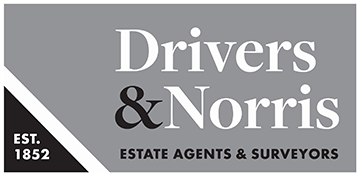
Wellness is a buzzword in urban regeneration at the moment. There was a growing focus around wellness prior to 2020, but then lockdown accelerated the need to re-evaluate living spaces from a wellness perspective.
Prior to the pandemic, we would consistently spend time across a range of different communal spaces, be this the office, the high street or at other recreational facilities. After 18 months spent almost exclusively at home, however, the demand on our own personal living areas, as well as that of its immediate surroundings, had changed.
Many house buyers and tenants are now prioritising bigger internal spaces that can more reasonably accommodate remote working. This is also allowing us to consider living away from the location of our work, as we have seen with the trends towards ‘counter-urbanisation’.
This trend is also seen in the demand for gardens and outdoor living areas, which have become essential escapes from our home offices. Typical ‘grid’-like planning, which often results in small and densely packed gardens, is going to struggle to satisfy this demand. The housebuilding industry is already starting to respond to accommodate this.
What ‘wellness’ attributes are city and town dwellers looking for?
For those city and town dwellers who have not abandoned the city for country or coastal locations, access to nature and parks has certainly been a priority. In an urban living environment, this has translated into a demand for quality outdoor living areas, such as terraces, balconies and rooftop gardens. Factors such as the placement of windows and the amount of natural light are also playing an increased role in the appeal of urban living. Wellness factors such as these will naturally prove to be an increasingly important part of the design process of urban properties moving forward, especially as businesses move to more hybrid working models.
Equally, urban dwellers are also demanding greater access to parks and natural spaces. Even when not working remotely, access to nature provides a crucial way for people to break the monotony of daily life, and even the very presence of trees and green streets is crucial.
Responding to the growth in wellness in planning and architecture
As a result of the choices that the recent remote and hybrid working model has shown, I expect the industry to begin to look well beyond the conventional model and respond accordingly. We are moving into a period in which considerations around living space, quality of gardens and character of properties are now a much bigger priority, rather than just living in close proximity to the workplace. Planning, design and housing are staunchly user-focused industries, and if these considerations around wellness remain as important as they currently are, architects and master planners will need to act fast.
As many city dwellers look to capitalise on the freedom provided by remote working, we will see less demand for office space, which we hope, in turn, will provide the land to develop more affordable but quality housing options for city dwellers and those looking to embrace city life. At the same time, planners also need to consider wellness factors including access to better infrastructure, community parks and other leisure facilities.
A project for today’s priorities
Our work is always informed by a strong landscape and biodiversity-led vision. This involves working closely with ecologists and landscape architects right from the early stages of a project. Taking into
account landscape features makes every scheme unique. In a recent project in Chichester, for example, we worked very closely with ecologists to significantly increase biodiversity enhancement of the site through the proposals. This allowed us to work with, not against, the local wildlife, and ensure that our final proposal complemented the local landscape both aesthetically and ecologically. The natural by-product of this focus is that all residents and visitors will reap the benefits of enhanced access to wildlife and green areas.
This was supported by an equally methodical approach towards the aesthetic appeal of the final project. Following a creation of a Pattern book, which detailed guidelines based on local vernacular, we aimed to create a physical setting in which the buildings, the landscape and the surrounding context were cohesive.
The city of the future
The city of the future will benefit from better infrastructure, including easier access to walking and cycling routes, public access to green areas and a substantial focus on biodiversity. Through better infrastructure, public transport and awareness of our carbon footprint, cities can begin to cut down on traffic and emissions.
The ‘15-minute neighbourhood’ model, in which access to key recreational and leisure facilities are merely 15 minutes away or less, has been a popular concept. An enhanced focus on wellbeing would also encourage city dwellers to explore local areas by foot, bike or public transport. This approach could go a long way in creating cohesion and a sense of ownership in our communities.
Complemented by better access to nature, and provision of adequate green areas for recreation and leisure, this could ensure that the city of the future complements our desire to escape from the hustle and bustle of daily life – which is fundamental to improving wellness.
